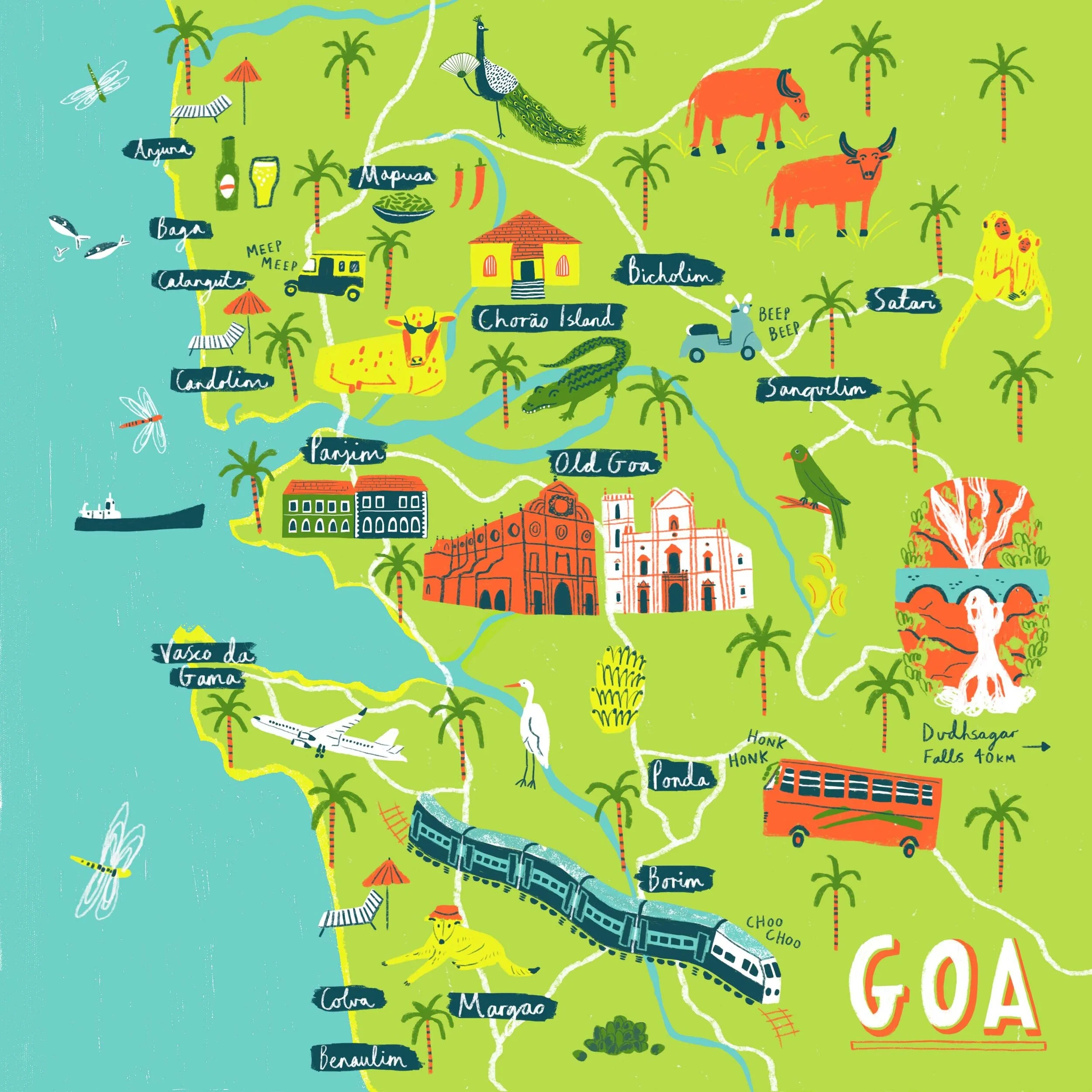Goa Map by Sarah Martin
Goa brings to mind images of earthly paradise with its golden coast, tropical greenery, a kaleidoscope like cityscape, and endless cultural experiences of various kinds. The idea of tourism in this state started off with local villagers opening their homes and kitchens, offering to show visitors around.
Goa officially became a state in May 1987. For easy management, it was then divided into two districts - North Goa and South Goa with Panjim and Margao as their respective headquarters. While both North Goa and South Goa embody the unique Goan ‘Sussegado’ spirit and have a plethora of options to choose from, there are some key differences in what they have to offer.
In a nutshell, North Goa has been the main magnet for tourists in the state. That has its positives, as North Goa now offers an amazing range of wonderful restaurants, bars, clubs and shopping boutiques. But some have begun to view North Goa as being a little ‘too-crowded’ and commercial with frequent traffic jams. South Goa on the contrary has retained its slow old Goa vibe. The beaches in South Goa are uncluttered and mostly occupied by high-end starred hotels that maintain them in relative pristine glory. South Goa is dotted with old Portuguese mansions and has fewer new concrete apartment buildings that dot North Goa. South Goa is known for its hidden gems such as the Cabo de Rama fort, Agonda beach and the Olive Ridley hatching sites at Galgibag beach.
A Comparison of North Goa vs. South Goa
South Goa
The beaches of South Goa on the other hand are quieter with a close connection to nature. Palolem beach, Colva beach, Butterfly beach and Benaulim beach are well known for their scenic views and the pristine surroundings.
Exploring South Goa is largely oriented around experiences in nature with places like Cabo De Gama, Rivona caves, the Rachol Fort as well as its own share of bird and wildlife sanctuaries.
The houses in South Goa speak to a different era and have a certain old world charm. The areas close to Chandor and Loutolim are known for their lavish colonial bungalows built many years ago by the Portuguese nobility. The buildings here are spaced out and far apart, with a focus on stepping out into the quiet of nature undisturbed.
In South Goa, the buzz and activity of a streetside market is found in the town of Margao, in the markets of Colem, Palolem and Caculo as well as along parts of the Colva beach. The town of Arossim in South Goa offers some of the best Goan cuisine and is known for its occasional vintage furniture markets.
The Codigo and Mollem Wildlife Sanctuaries are known for their bird-rich forest and varied flora. Several nesting sites of Olive Ridley marine turtles are also to be found in the region including Galjibag in the far south.
North Goa
Beaches
The beaches of North Goa are generally favoured by short term tourists and water sport enthusiasts.
places of interest
North Goa is home to many captivating churches, the world heritage churches at old Goa, famous forts such as Fort Aguada and Chapora Fort, the Latin Quarter in Panjim, as well as gorgeous wildlife parks and stretches for dolphin spotting.
Cityscape
North Goa is a hub of activity and urban density but it also houses beautiful Portuguese settlements and numerous quaint Portuguese churches that have stood strong for centuries. The Portuguese influence is evident in areas like Fontainhas in Panjim with narrow lanes and bright colors.
Local Markets
North Goa brims with colourful flea markets that sell everything from clothes and accessories to souvenirs, handicrafts, pottery and local products at very low prices. The Saturday Night Market in Arpora, the Anjuna Market on Wednesday, and the Mapusa Market on Friday are visited by both tourists and visitors.
Wildlife
The Salim Ali Sanctuary, near Old Goa, is heaven for ornithologists. Mhadei Wildlife Sanctuary and Bondla Wildlife Sanctuary are famous reserves in North Goa















